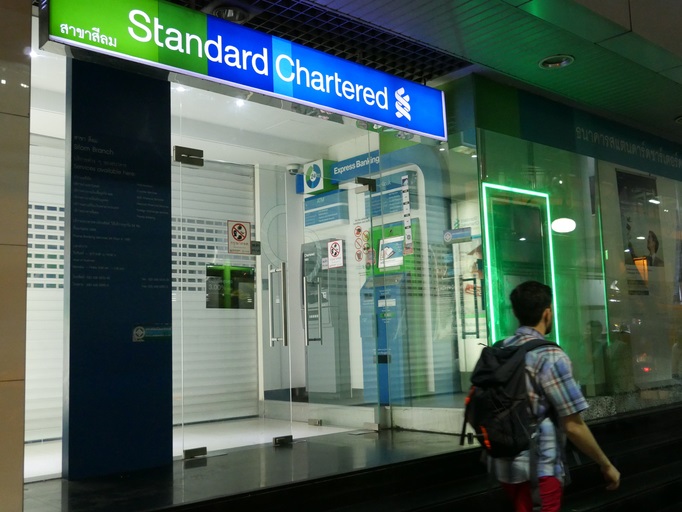Standard Chartered rounds off bank results season in style
These Q1 results bring an end to reporting season for the UK bank sector, and the numbers have got investors excited again. ii's head of markets explains why.
2nd May 2024 08:23
by Richard Hunter from interactive investor

Standard Chartered (LSE:STAN) has provided a fitting end to what has been a mostly positive quarterly reporting season for the banks.
Despite the headwinds of its exposure to China and the real estate sector in particular, where its presence remains a blessing and a curse, the group’s general exposure to Asia has offset any immediate concerns.
Indeed, Standard previously highlighted that there were particular pockets of optimism throughout the region, such as the movement of capital away from oil in the Middle East and the inexorable economic growth in India.
- Invest with ii: Open a Stocks & Shares ISA | ISA Investment Ideas | Transfer a Stocks & Shares ISA
The numbers themselves have for the most part sailed past expectations, largely driven by strong business activity and higher interest rates in many of the markets in which it operates. Operating income of $5.2 billion for the first quarter represented an increase of 17% from the corresponding period, with Net Interest Income (NII) growing by 5% to $2.4 billion.
Of particular note, however, was non NII income, which leapt 37% to $2.7 billion, with notable contributions from each of its main units. Heightened trading saw the Markets unit income jump by 17%, while banking rose by the same amount. The wealth unit saw income growth of 23%, with $11 billion of net new money, especially within its affluent sector adding to performance.
The headline figures were also much better than expected, with pre-tax profit of $1.91 billion representing a rise of 5.9% and beating estimates of $1.39 billion. Similarly, growth of 5% in net profit to $1.22 billion blew through the consensus number of $797.5 million.
Other key metrics also revealed a bank which remains in good shape, with the capital cushion, or CET1 ratio stable at 13.6%, underpinned by an improved Net Interest Margin of 1.76%, up from 1.63% and a cost/income ratio of 58.4% against a previous 60.3%.
- UK bank share tips: Lloyds Bank makes this buy list
- Lloyds Bank and Aviva part of FTSE 100’s £9bn dividend windfall
- Sign up to our free newsletter for investment ideas, latest news and award-winning analysis
A Return on Tangible Equity (ROTE) of 15.2% was boosted by improved overall profitability, while impairments of $176 million were made on a prudent basis, largely relating to the Wealth business. The fallout from the China property exposure is now likely to total some $1.2 billion, although much of the provision has already been taken in the previous period.
The group also announced that around two-thirds of the $1 billion share buyback programme had now been completed, which all things being equal could lead to a further buyback announcement at the half-year results. In terms of dividends, the current yield stands at 3.1%, although traditionally the bank has not been one for more generous dividend payments.
Meanwhile, the strength of the first quarter and the momentum it provides has led to outlook guidance being maintained for the full year. This includes but is not limited to growth in operating income of between 5% and 7% between this year and 2026, NII of between $10 billion and $10.25 billion and a ROTE of around 10% with a target of 12% by 2026.
After some years in the doldrums having been the darling of the UK banking sector, Standard finds itself in something of a revival. The shares have risen by 11% over the last year, as compared to a rise of 4.5% for the wider FTSE100 and by 26% over the last two years.
- Insider: boardroom buyer backs this FTSE 100 top pick
- Making the most of your tax breaks in 2024
- The tech funds with low volatility and top returns
Although a potential takeover by First Abu Dhabi Bank previously came to nothing, such bid speculation remains close to the surface. In the meantime, for the medium and longer term the Asian region should provide some significant opportunities in areas where the bank has a well-established and trusted presence.
The initial market reaction to Standard’s outperformance this quarter is reflective of renewed optimism for the group and could put upward pressure on a market consensus which currently stands at a 'hold', albeit a strong one.
These articles are provided for information purposes only. Occasionally, an opinion about whether to buy or sell a specific investment may be provided by third parties. The content is not intended to be a personal recommendation to buy or sell any financial instrument or product, or to adopt any investment strategy as it is not provided based on an assessment of your investing knowledge and experience, your financial situation or your investment objectives. The value of your investments, and the income derived from them, may go down as well as up. You may not get back all the money that you invest. The investments referred to in this article may not be suitable for all investors, and if in doubt, an investor should seek advice from a qualified investment adviser.
Full performance can be found on the company or index summary page on the interactive investor website. Simply click on the company's or index name highlighted in the article.